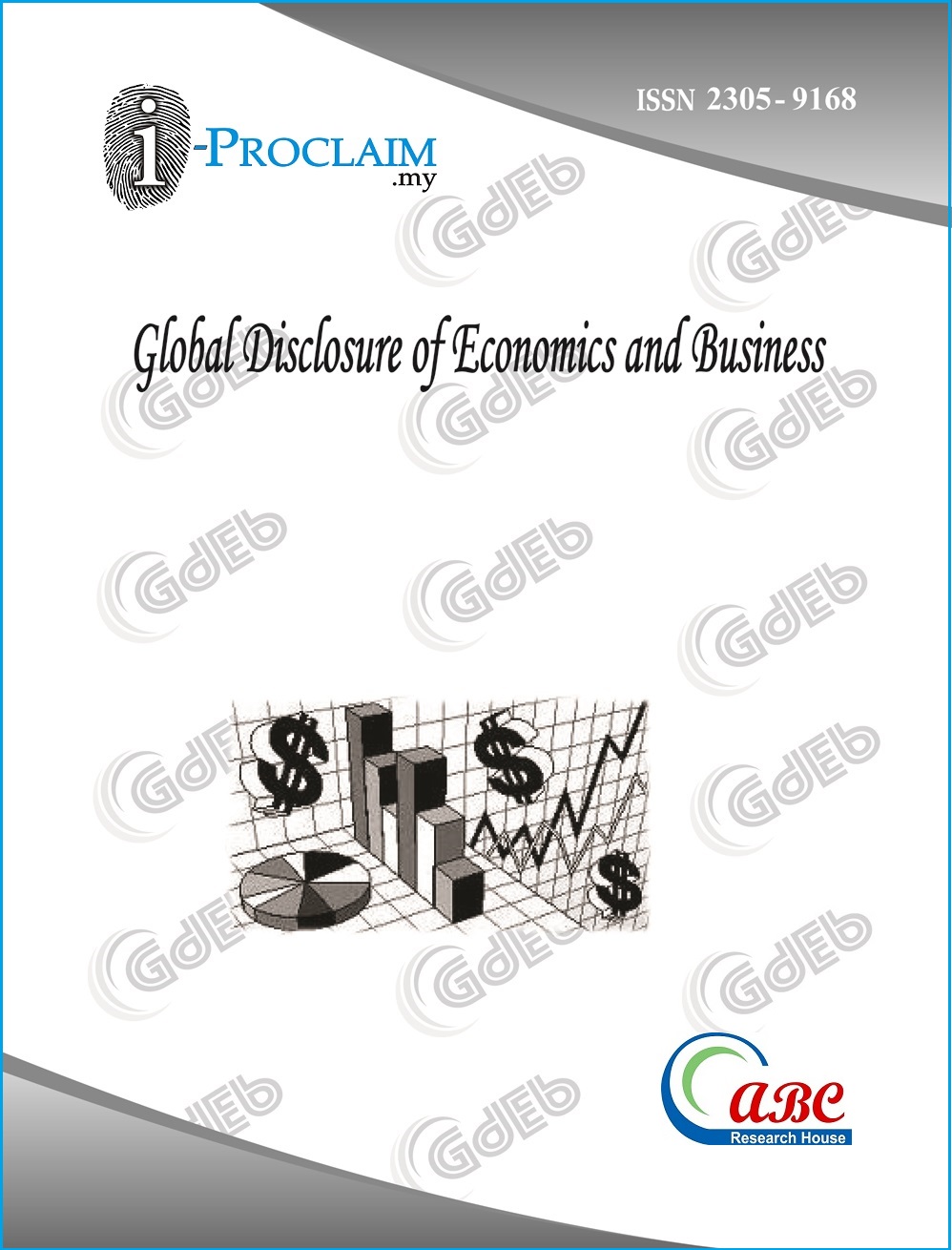The Implications of Artificial Intelligence for the Future of the Workforce Markets
DOI:
https://doi.org/10.18034/gdeb.v10i2.628Keywords:
Artificial Intelligence, Technology, Labor Market, Economic Growth, UnemploymentAbstract
Contrary to output and employment statistics, mechanization and artificial intelligence has always been viewed as threats to job security. Modern industrial robotization with worker replacement raises unemployment, yet there is evidence of its reduction. This book shows how, despite inevitable robotization and job loss, new trades and professions will emerge, just as in the previous three revolutions, in all sectors of goods, services, and the military. However, current publications confront them with the technological trend of the twentieth century, company activity, and its effect on the future labor market. Statistically, highly qualified organizations and employees adapt quickly. Negative implications include loss of low-skilled worker competitiveness, loss of union bargaining power, increased gender pay gap, and wider gap between high-tech industrialized and undeveloped countries. It is concluded that immediate improvements are required in educational programs, labor reforms, and financial reforms. Less developed countries will continue to fall behind unless they reform their economic policies innovatively and pragmatically.
Downloads
References
Adusumalli, H. P. (2017). Software Application Development to Backing the Legitimacy of Digital Annals: Use of the Diplomatic Archives. ABC Journal of Advanced Research, 6(2), 121-126. https://doi.org/10.18034/abcjar.v6i2.618
Adusumalli, H. P. (2018). Digitization in Agriculture: A Timely Challenge for Ecological Perspectives. Asia Pacific Journal of Energy and Environment, 5(2), 97-102. https://doi.org/10.18034/apjee.v5i2.619
Adusumalli, H. P. (2019). Expansion of Machine Learning Employment in Engineering Learning: A Review of Selected Literature. International Journal of Reciprocal Symmetry and Physical Sciences, 6, 15–19. Retrieved from https://upright.pub/index.php/ijrsps/article/view/65
Adusumalli, H. P., & Pasupuleti, M. B. (2017). Applications and Practices of Big Data for Development. Asian Business Review, 7(3), 111-116. https://doi.org/10.18034/abr.v7i3.597
Brown, K. (2018). The World According to Xi: everything you need to know about new China. London: I. B. Tauris & Co. Ltd. DOI: https://doi.org/10.5040/9781350989405
Fadziso, T., Adusumalli, H. P., & Pasupuleti, M. B. (2018). Cloud of Things and Interworking IoT Platform: Strategy and Execution Overviews. Asian Journal of Applied Science and Engineering, 7, 85–92. Retrieved from https://upright.pub/index.php/ajase/article/view/63
Frey, C. B. (2019). The Technology Trap. Princeton University Press.
Gómez-Mejía, A. (2017). Financing Technological Innovation in Global Capital Markets. 2009-2016. Libre Empresa Magazine, 14(1), 57-83. http://dx.doi.org/10.18041/libemp.2017.v14n1.27103 DOI: https://doi.org/10.18041/libemp.2017v14n1.27103
Khan, W., Ahmed, A. A. A., Hossain, M. S., Neogy, T. K. (2020). The Interactive Approach to Working Capital Knowledge: Survey Evidence. International Journal of Nonlinear Analysis and Applications, 11(Special Issue), 379-393. https://doi.org/10.22075/ijnaa.2020.4631
Kubrick, S. (1968). 2001: A Space Odyssey. Metro-Goldwyn-Mayer.
Mantoux, P. (1983). The Industrial Revolution in the Eighteenth Century. The University of Chicago Press. Chicago.
Miah, M. S., Pasupuleti, M. B., & Adusumalli, H. P. (2021). The Nexus between the Machine Learning Techniques and Software Project Estimation. Global Disclosure of Economics and Business, 10(1), 37-44. https://doi.org/10.18034/gdeb.v10i1.627 DOI: https://doi.org/10.18034/gdeb.v10i1.627
Pasupuleti, M. B. (2016). Data Scientist Careers: Applied Orientation for the Beginners. Global Disclosure of Economics and Business, 5(2), 125-132. https://doi.org/10.18034/gdeb.v5i2.617 DOI: https://doi.org/10.18034/gdeb.v5i2.617
Pasupuleti, M. B. (2017). AMI Data for Decision Makers and the Use of Data Analytics Approach. Asia Pacific Journal of Energy and Environment, 4(2), 65-70. https://doi.org/10.18034/apjee.v4i2.623
Pasupuleti, M. B. (2018). The Application of Machine Learning Techniques in Software Project Management- An Examination. ABC Journal of Advanced Research, 7(2), 113-122. https://doi.org/10.18034/abcjar.v7i2.626
Pasupuleti, M. B. (2020). Artificial Intelligence and Traditional Machine Learning to Deep Neural Networks: A Study for Social Implications. Asian Journal of Humanity, Art and Literature, 7(2), 137-146. https://doi.org/10.18034/ajhal.v7i2.622
Pasupuleti, M. B., & Adusumalli, H. P. (2018). Digital Transformation of the High-Technology Manufacturing: An Overview of Main Blockades. American Journal of Trade and Policy, 5(3), 139-142. https://doi.org/10.18034/ajtp.v5i3.599
Pasupuleti, M. B., & Amin, R. (2018). Word Embedding with ConvNet-Bi Directional LSTM Techniques: A Review of Related Literature. International Journal of Reciprocal Symmetry and Physical Sciences, 5, 9–13. Retrieved from https://upright.pub/index.php/ijrsps/article/view/64
Pasupuleti, M. B., Miah, M. S., & Adusumalli, H. P. (2019). IoT for Future Technology Augmentation: A Radical Approach. Engineering International, 7(2), 105-116. https://doi.org/10.18034/ei.v7i2.601
Rahman, M. M., Chowdhury, M. R. H. K., Islam, M. A., Tohfa, M. U., Kader, M. A. L., Ahmed, A. A. A., & Donepudi, P. K. (2020). Relationship between Socio-Demographic Characteristics and Job Satisfaction: Evidence from Private Bank Employees. American Journal of Trade and Policy, 7(2), 65-72. https://doi.org/10.18034/ajtp.v7i2.492 DOI: https://doi.org/10.18034/ajtp.v7i2.492
Rahman, M. M., Pasupuleti, M. B., & Adusumalli, H. P. (2019). Advanced Metering Infrastructure Data: Overviews for the Big Data Framework. ABC Research Alert, 7(3), 159-168. https://doi.org/10.18034/abcra.v7i3.602
Ruttan, V. W. (2006). Is War Necessary for Economic Growth? Military Procurement and Technology Development. University of Minnesota, Department of Applied Economics, Staff Papers, 06-14. http://purl.umn.edu/13534
--0--










